While we recommend that strength training using additional weights should be done on its own, bodyweight exercises can be performed as part of the warm-up or at the end of a climbing session. As with climbing-specific strength training, we recommend starting general strength training with a higher number of repetitions at lower loads so you can learn the techniques and movements. Then, as you progress, you can increase the load and reduce the number of repetitions per set. We have mainly chosen exercises that activate several muscle groups at the same time because this reflects the complexity of climbing, where we use multiple parts of the body. We have also chosen exercises that are primarily aimed at muscles that work in the opposite direction to what we encounter in climbing, so as to create balance in our training.
PUSH-UPS
Push-ups are a good exercise for your shoulders, arms, and chest. For the elbows and shoulders, push-ups train the opposite movements to what we encounter in climbing—pushing away rather than pulling in—and can therefore help to reduce the risk of injury related to these joints. It’s an easy exercise to start with, and it’s also easy to make it harder and more challenging.
Begin by standing on all fours with your knees on the ground and your hands about shoulder width apart. Lower your chest to the floor and push back up again without twisting your elbows out. When you’re able to do three sets of 10 repetitions, you can up the difficulty by standing on your toes instead of on your knees. Do as many as you can each set, and complete three sets with a 2- to 3-minute rest between each set. When you’re able to do more than 10 repetitions for three sets on your toes, you can start to vary the exercise by adding rotations, as seen in photos 3 and 4.
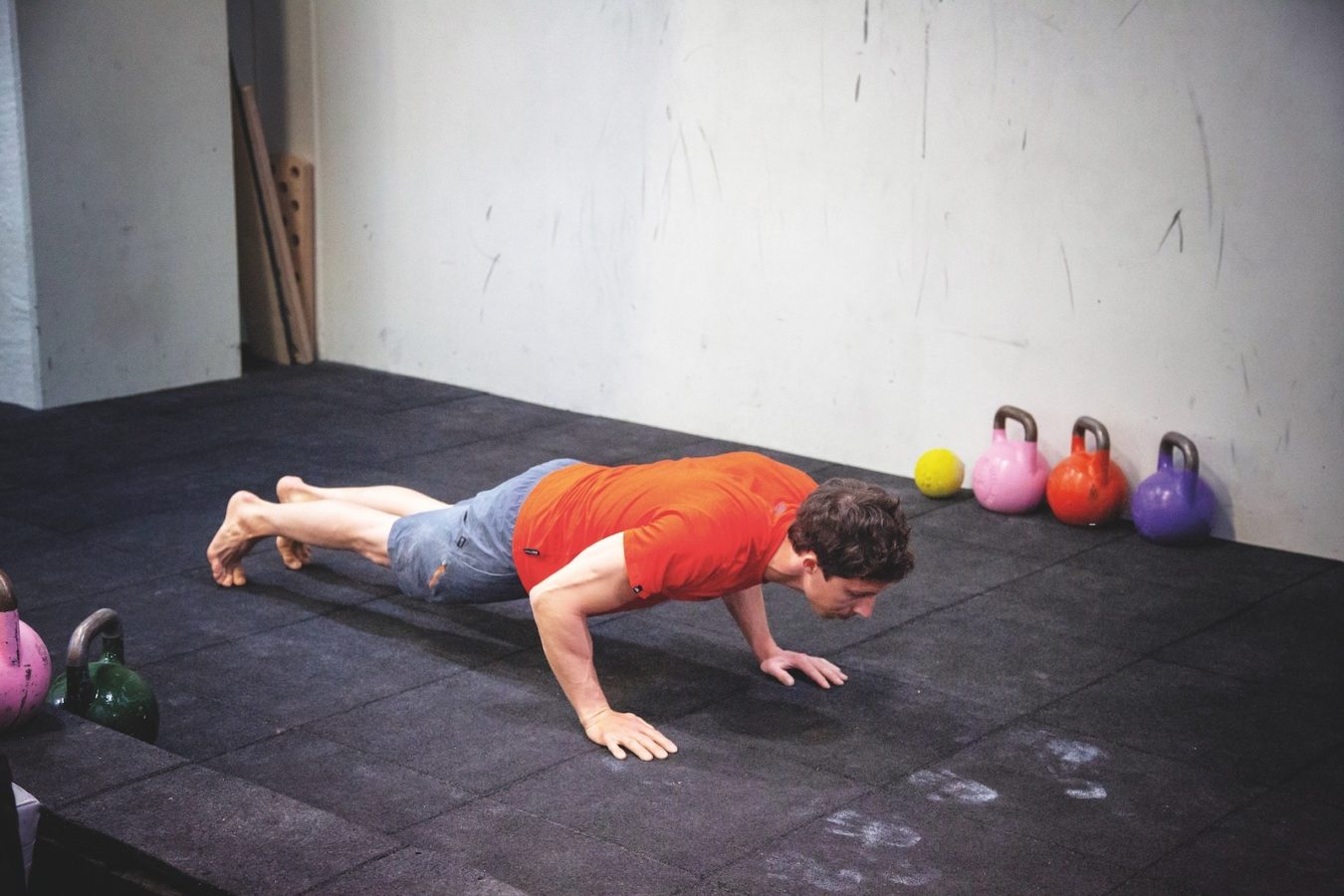
1 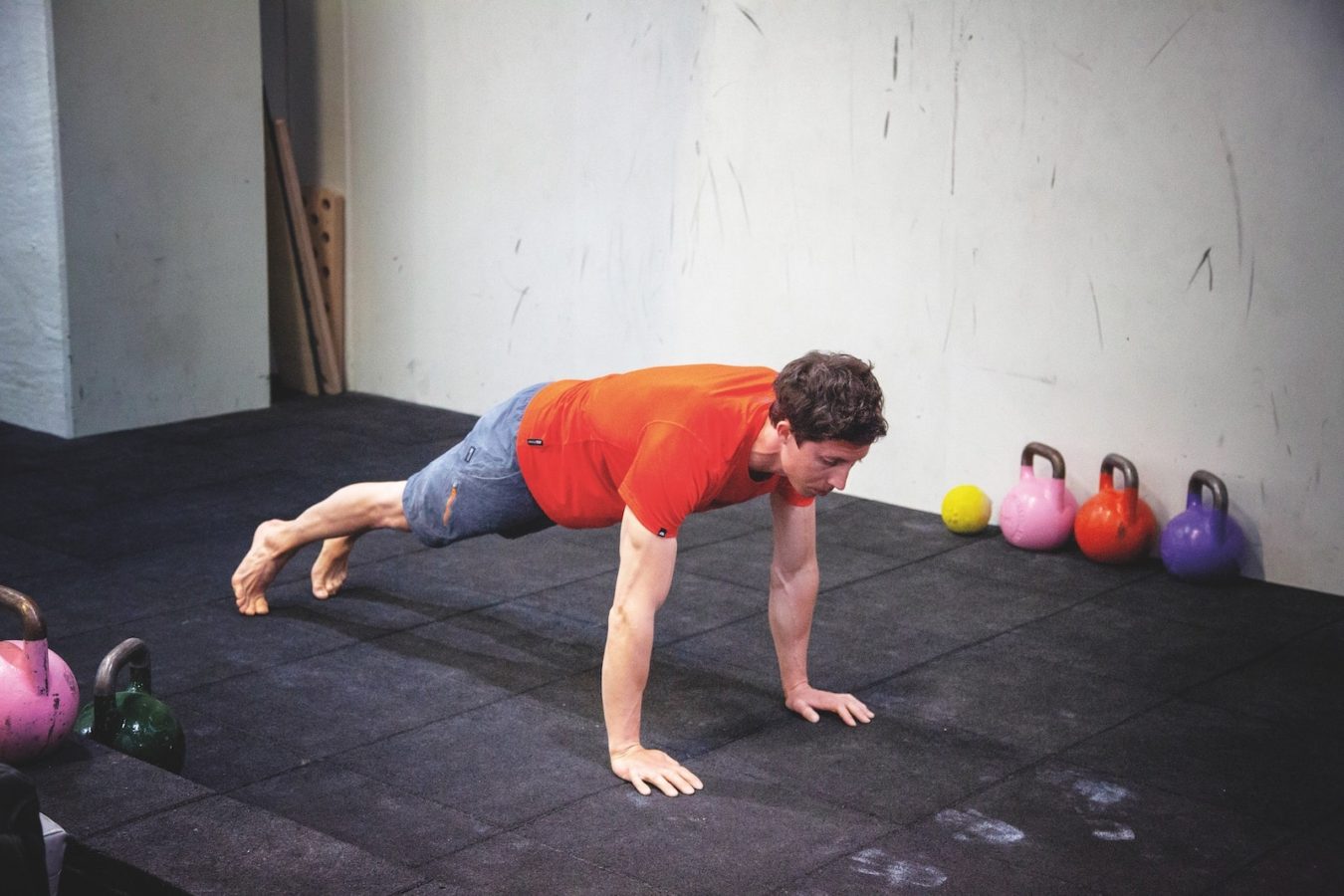
2 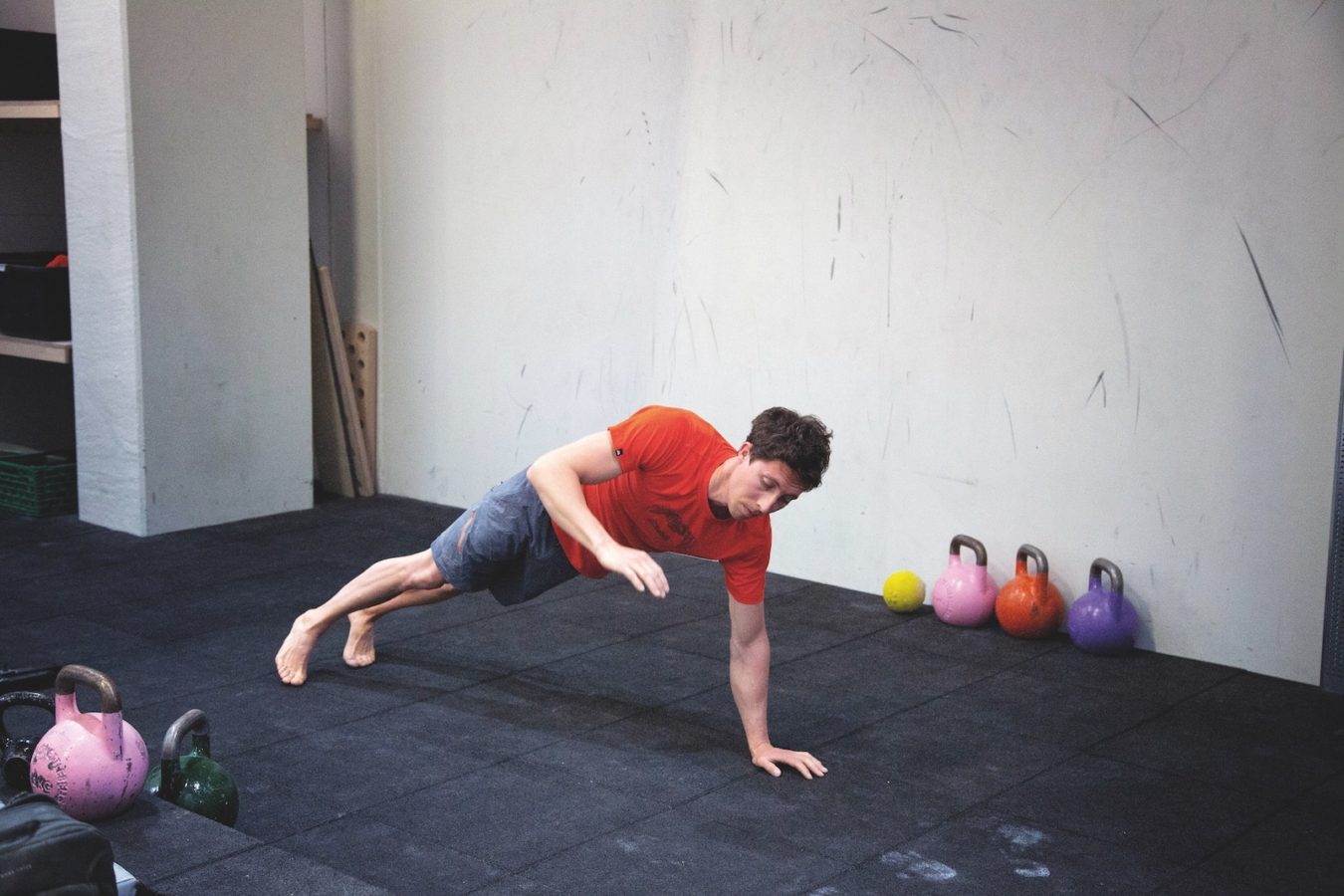
3 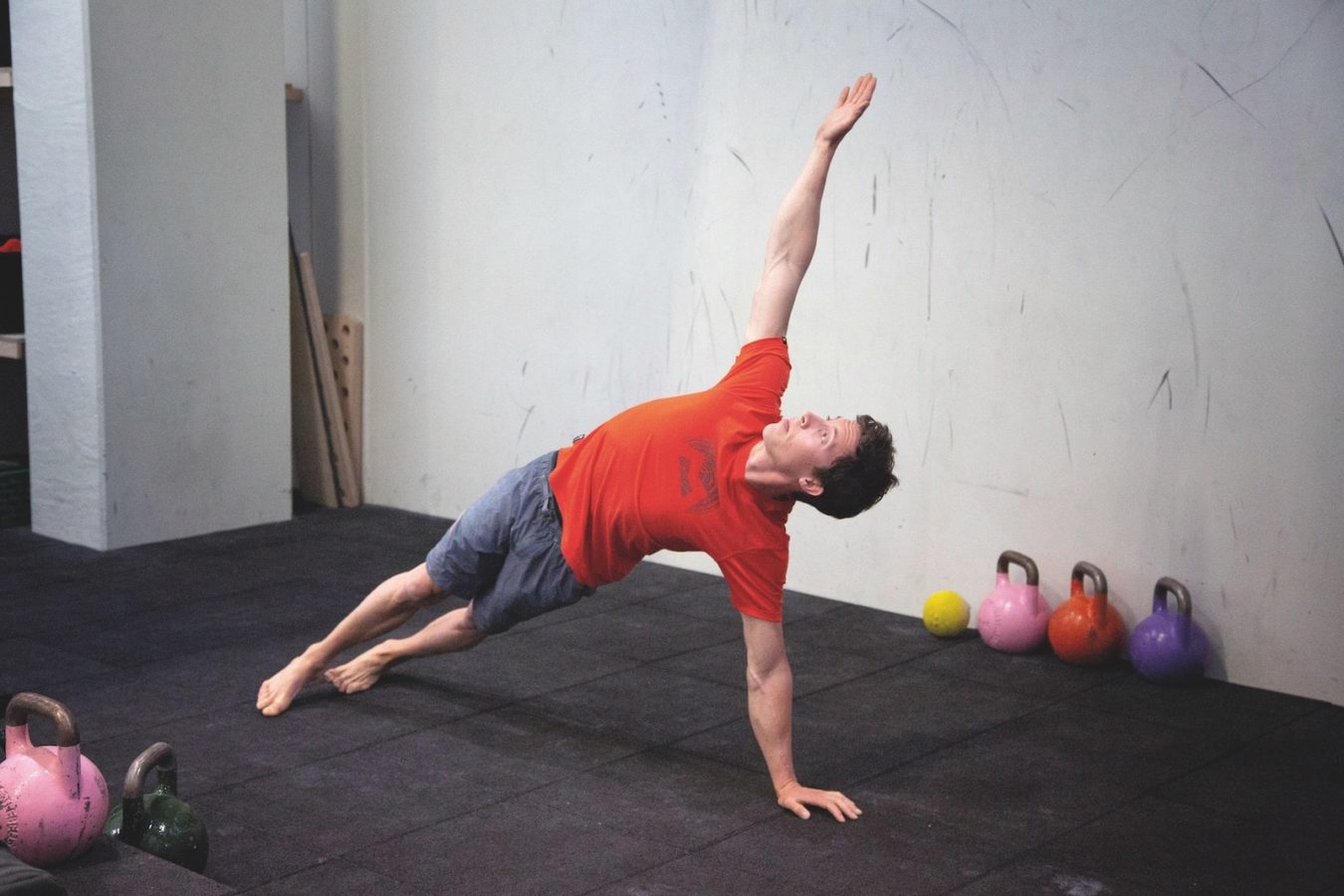
4
THE LARVA
The larva is a good exercise for your shoulders, chest, abs, and back. The further you walk your hands in front of you, the more you train and utilize the full range of motion in your shoulders; it is particularly at the far end of this range that you need to build strength to reduce the risk of injury to your shoulders.
Start the exercise with both hands and feet touching the floor. Walk your hands as far in front of you as you can while keeping a strong core, then walk your feet back up to the starting position. Avoid dropping your hips or arching your back – you should feel your abdomen and back muscles working to keep your core strong, stable and straight.
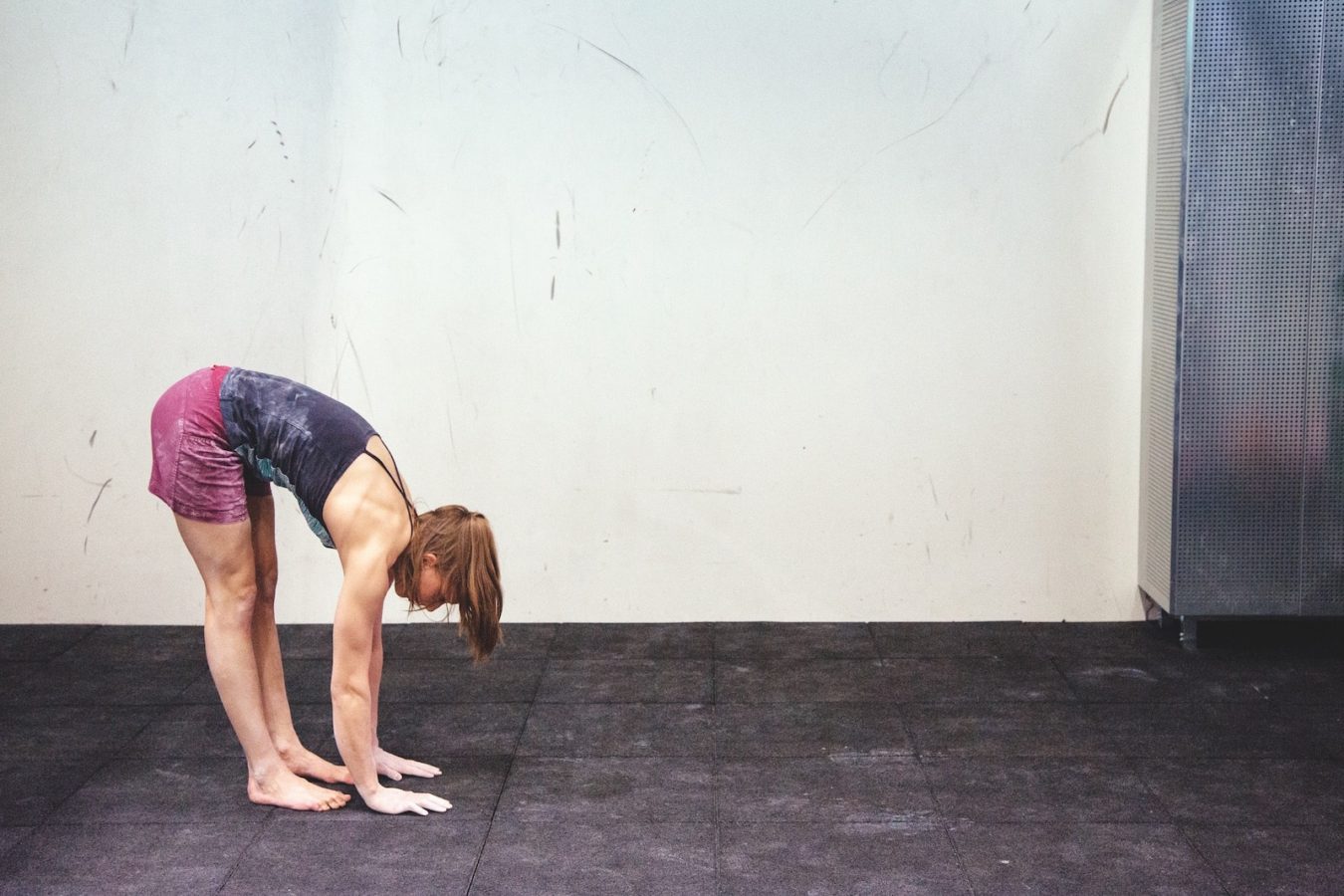
1 
2 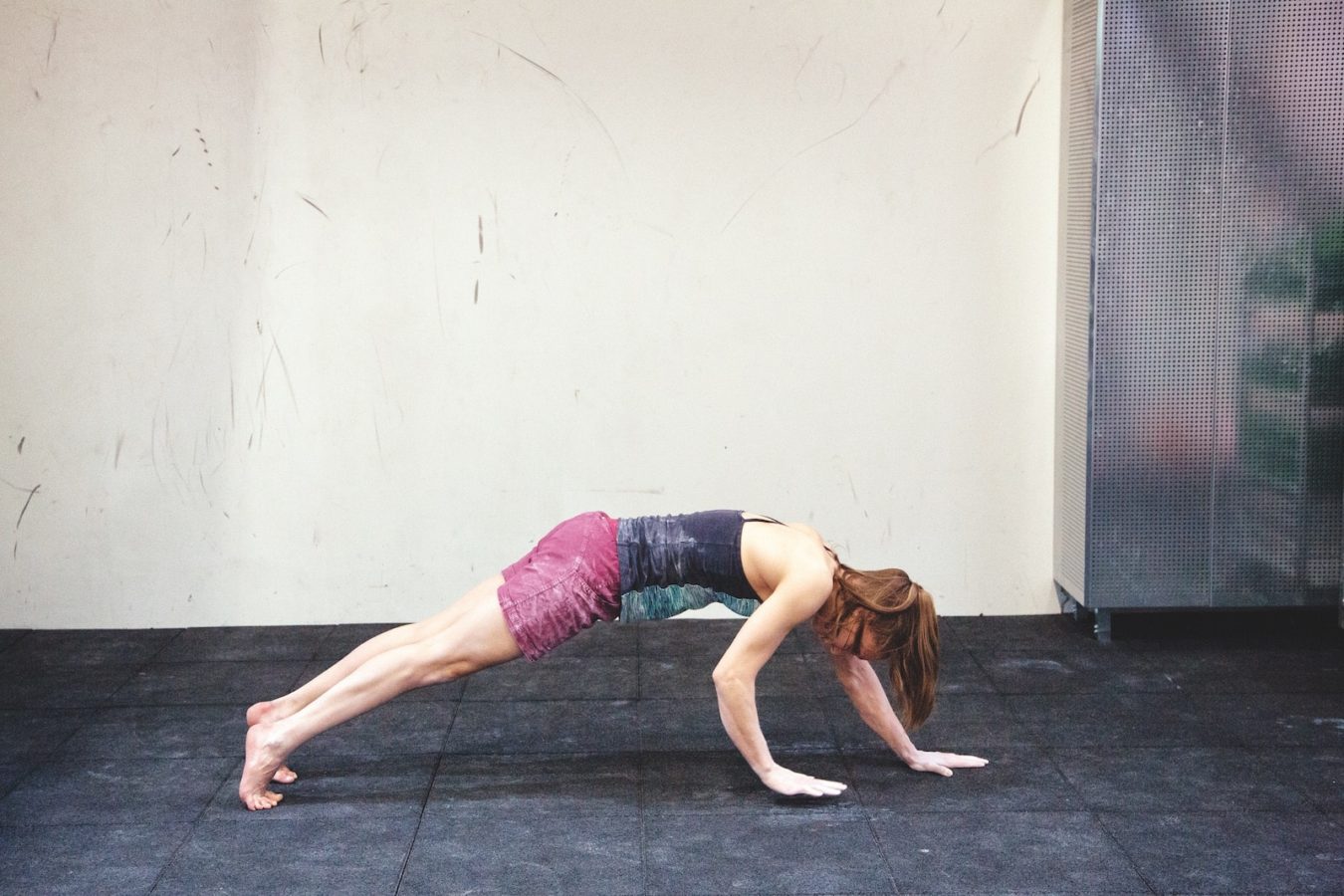
3 
4
DEEP SQUATS
Deep squats are, as the name implies, squats where you go as deep down to the ground with your hips as you can. This is a good exercise for building strength for high foot placements and it’s good for training your thighs, glutes, and back. When climbing your knees are constantly exposed to torsional strain as you angle your legs and feet into different positions in relation to the holds. By regularly training your knees you can build strength around the knee joints and thereby reduce the risk of injury. To make the exercise harder and at the same time incorporate training for your shoulders and upper body, we recommend using a bungee and pretending you have the wings of an angel.
Start the exercise with your arms over your head and the bungee attached in front of you. Move your arms down to the side and back up again as if you’re making snow angels. When your arms are back above your head, do a deep squat while keeping your arms pointing straight up; repeat the angel movement when you’re standing upright again. You should feel the muscles working actively in your lower back, thoracic spine, between your shoulder blades, in your thighs and in your glutes.
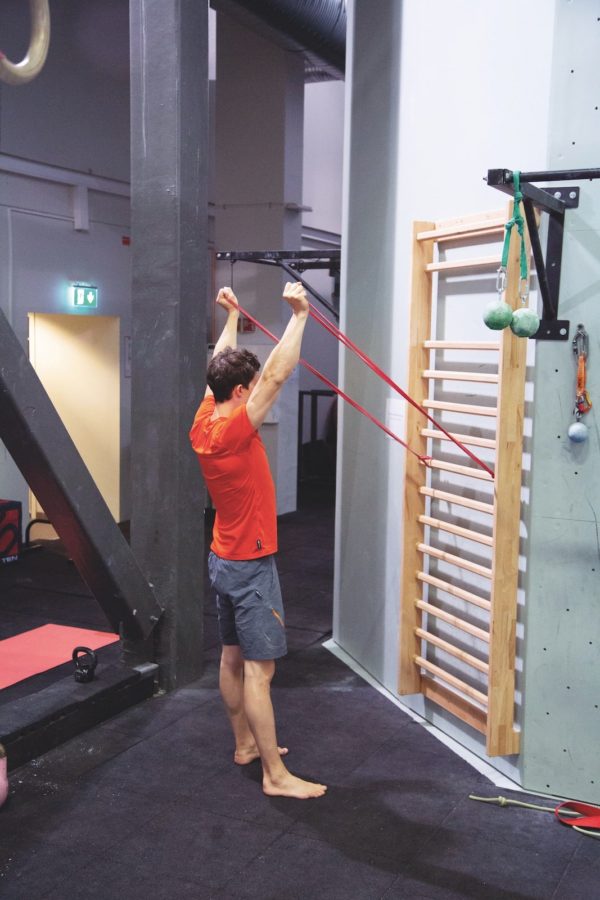
1 
2 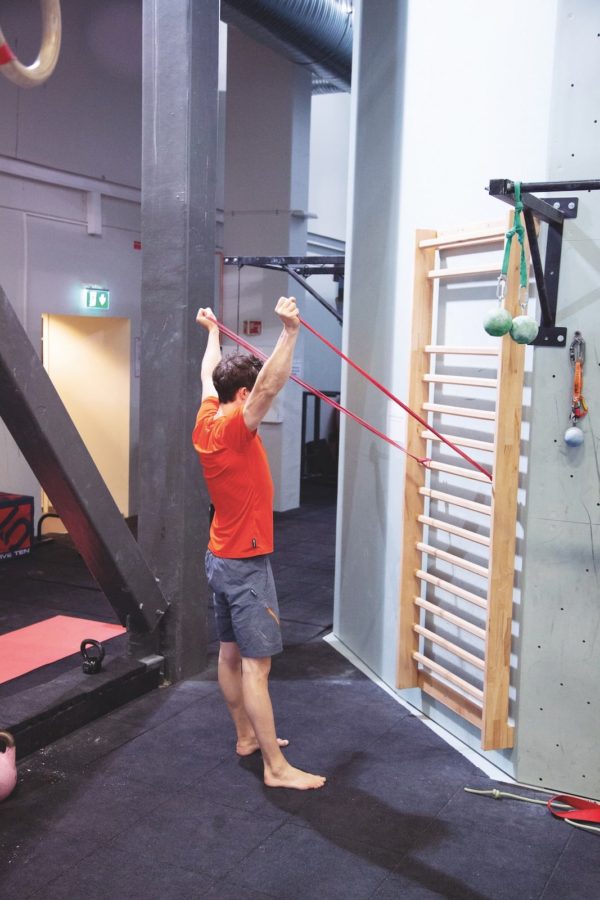
3 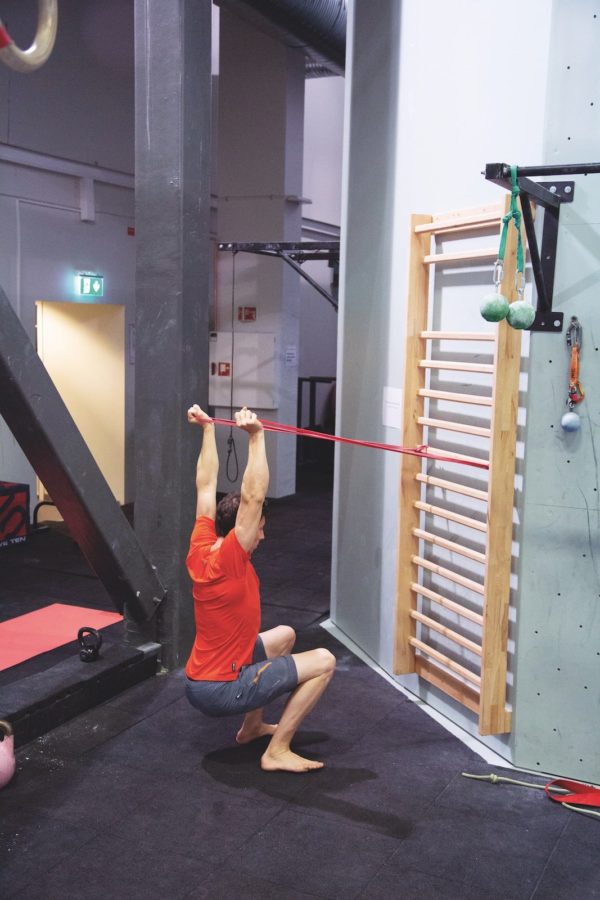
4
LUNGES WITH ARM RAISE
Lunges with arm raise is a similar exercise to the deep squats, but here you are activating the muscles in your back and shoulder differently. Raising your arm up and back with added resistance is a good way to train the opposite motion to a typical climbing move. In addition to the balance element, lunges train your glutes and the fronts of your thighs. The exercise starts in an upright position with one leg in front of the other. Shift your weight forwards to the front leg and lower your hips. As you stand back up, raise your arm with your thumb pointing up. With your left foot forwards, lift your right hand, and vice versa. You should feel the muscles working actively in your lower back, thoracic spine, between your shoulder blades as well as in your thighs and glutes.
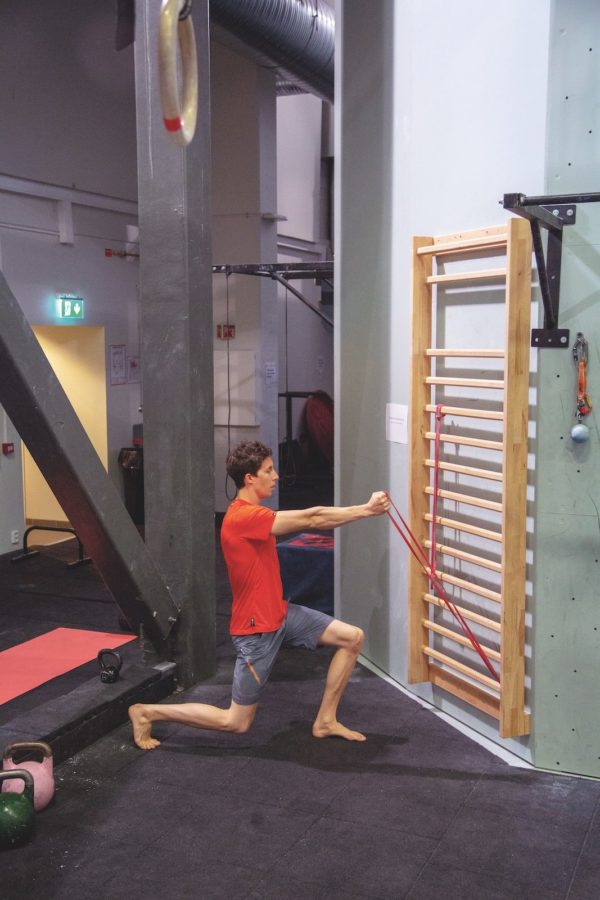
1 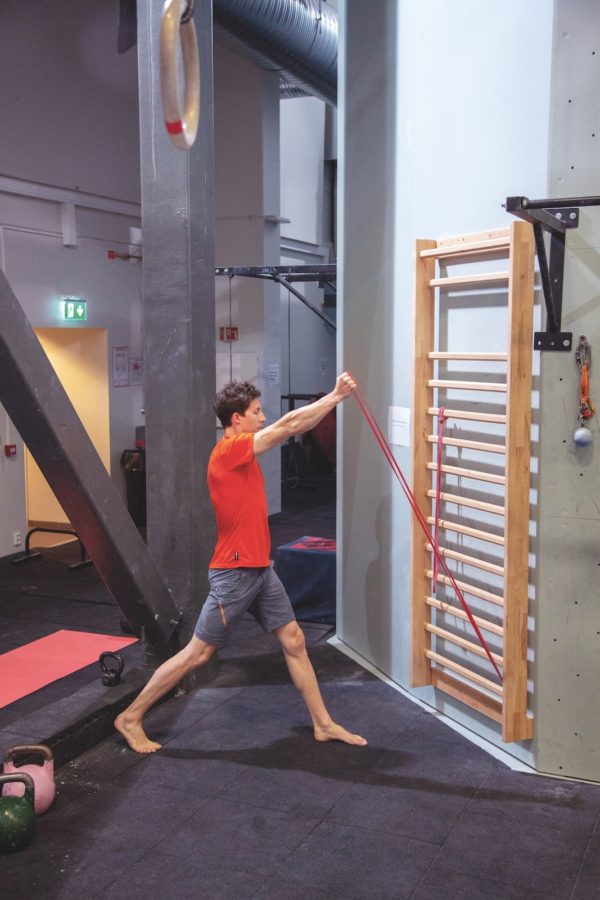
2 
3 
4
Below is a suggestion for a strength training routine to complete after a climbing session. If you want to use some of the exercises as part of your general warm-up you can do 1–2 sets of each exercise at low loads.
| Exercise | Repetitions | Sets | Rest Between Sets |
| Push-ups | 8-10 | 3-4 | 2-3 minutes |
| Larva | 8-10 | 3-4 | 2-3 minutes |
| Deep Squats | 8-10 | 3-4 | 2-3 minutes |
| Lunges with Arm Raise | 8-10 per side | 3-4 | 2-3 minutes |
SUSPENSION TRAINING
Training with slings has become a popular form of training over the last few years, and it’s a good training method for combining our own body weight with unstable ground. The big advantages for climbers are that we can train close to the limit of the range of our joint mobility, it requires good muscular control over the different joints because the slings hang freely, and all the exercises challenge our core muscles.
As a general rule for all three exercises here, we recommend that if you can complete 10 repetitions for all three sets, you should increase the difficulty by standing on your toes instead of on your knees. Then work your way back up to three sets of 10 repetitions with 2 to 3 minutes of rest between each set. It’s important to maintain control throughout the movements and to stabilize your shoulders and arms. The three exercises we recommend are:
PUSH-UPS
Begin by standing on your knees and grab the slings with your hands at shoulder width. Lower your chest to the same height as your hands and push back up.
CHEST FLIES
Begin by standing on your knees and grab the slings with your hands at shoulder width. Move your arms out to each side and lower your chest. Push yourself back up by pressing your arms back together.
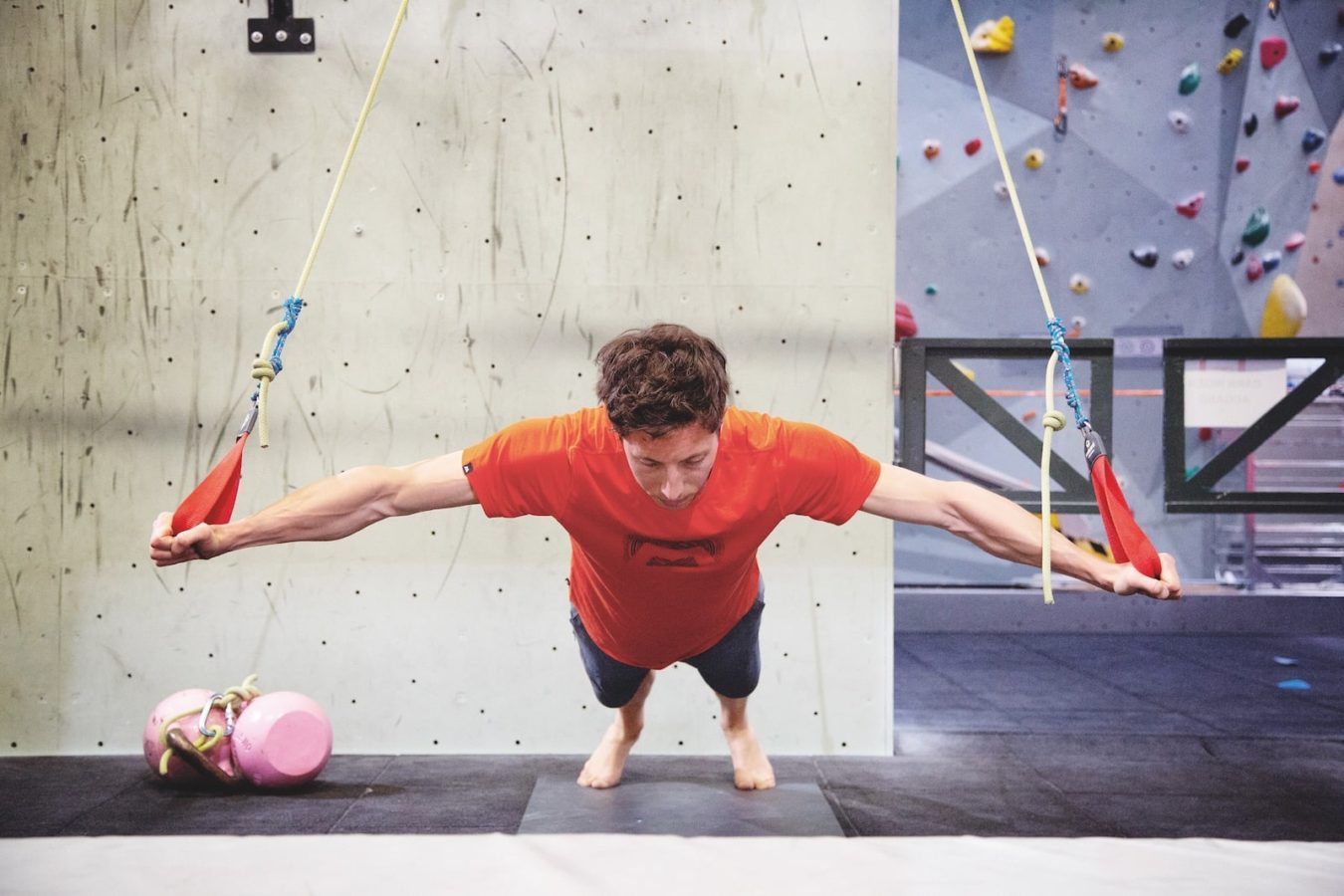
SUPERMAN
Begin by standing on your knees and grab the slings with your hands at shoulder width. Move your arms straight ahead while tightening your abdominal muscles and leaning forward. Stop when your arms are aligned with your ears. Push yourself back up by pressing your arms down.
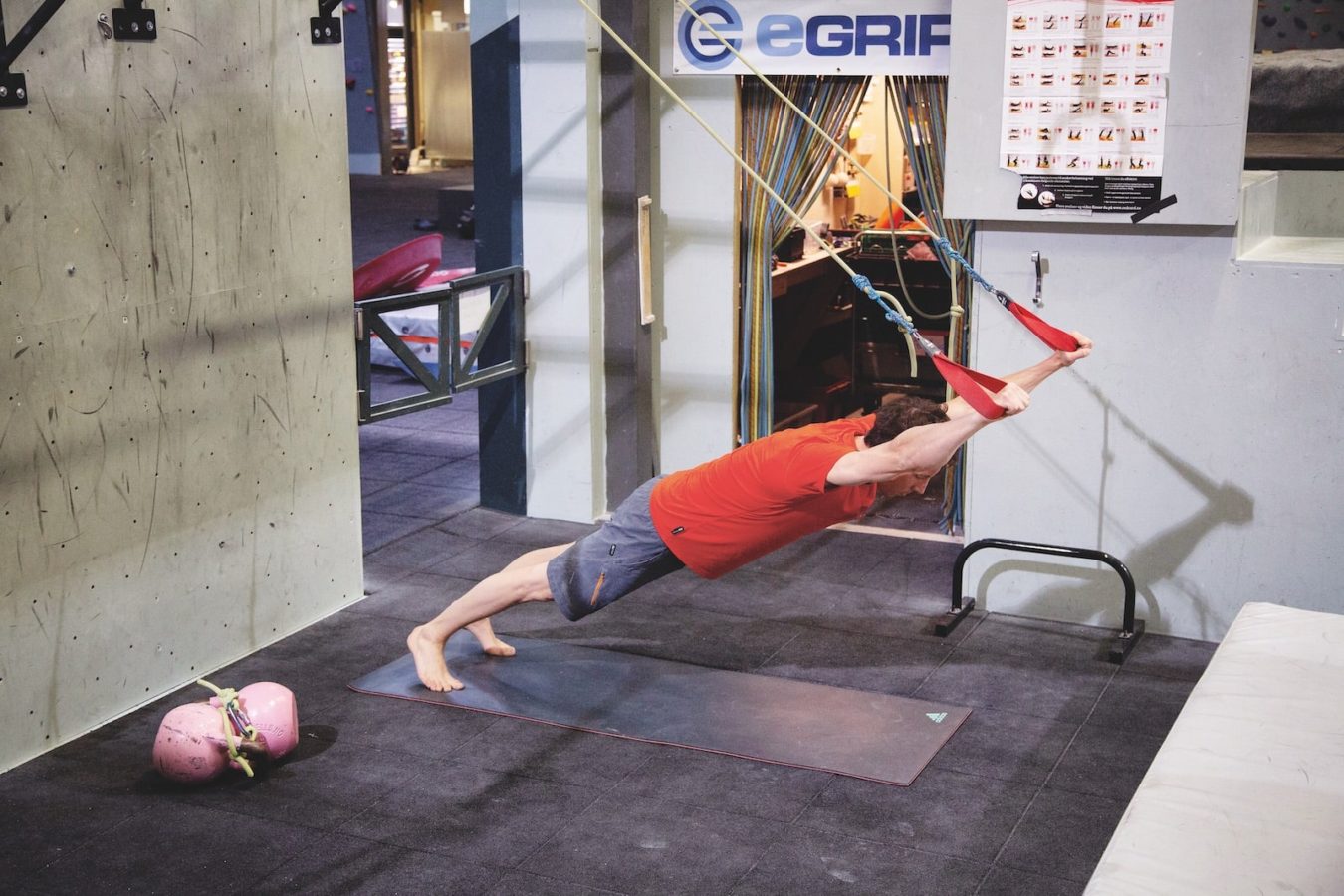

This is an excerpt from “The Climbing Bible: Technical, Physical, and Mental Training for Rock Climbing” by Martin Mobråten and Stian Christophersen. The authors have been climbing coaches for a number of years. Based on their own extensive experience and research, this book collates the best European training techniques into one book with information on how to specifically train for the technical, physical and mental performance factors in climbing – including endurance, power, motivation, fear of falling, and much more. Check out Vertebrate Publishing for more details.

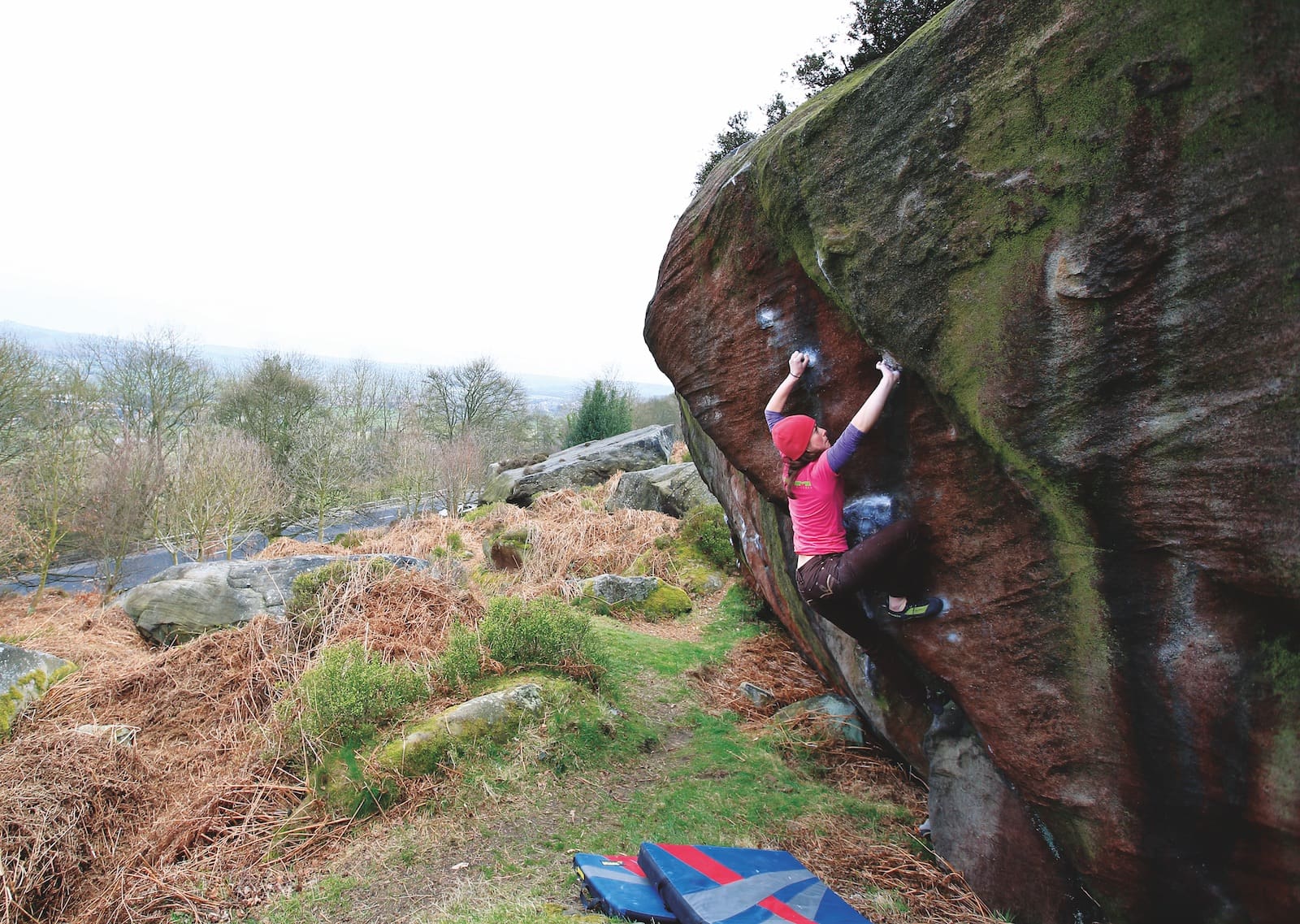


0 Comments